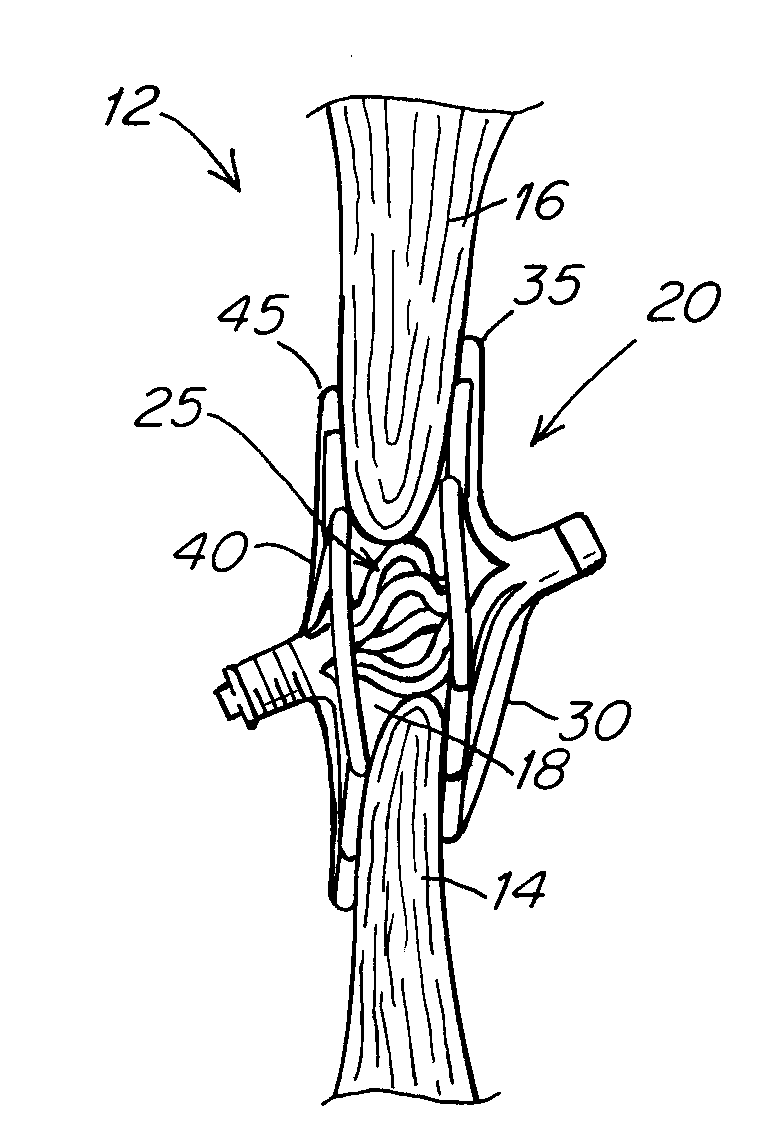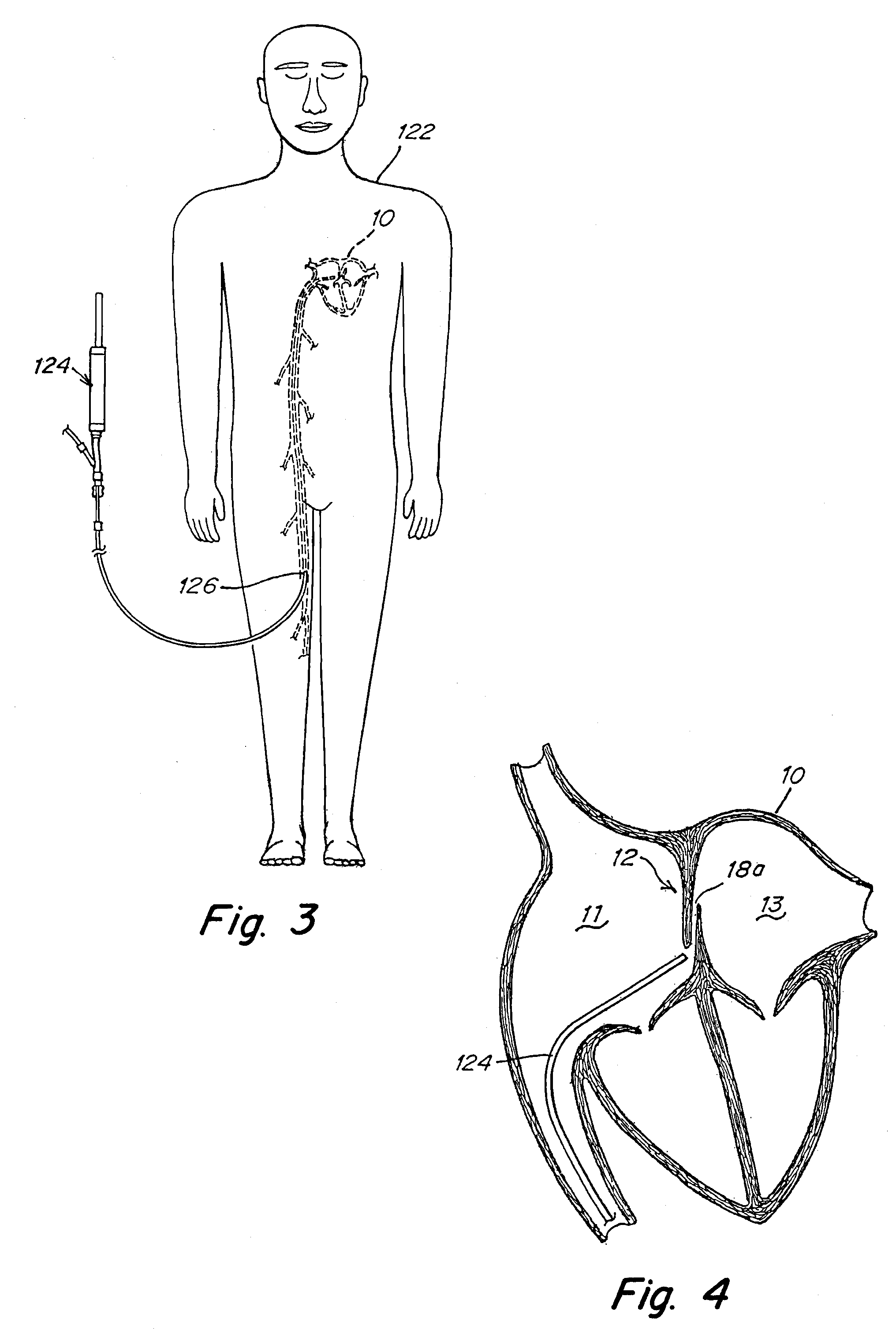Septal closure device with centering mechanism
a technology of septal closure and centering mechanism, which is applied in the field of septal closure devices, can solve the problems of recurrent cerebrovascular events, increased risk of future cerebrovascular events, and increased blood pressure in the lung arteries of patients with pfo who have had cerebral vascular events, so as to prevent leakage
- Summary
- Abstract
- Description
- Claims
- Application Information
AI Technical Summary
Benefits of technology
Problems solved by technology
Method used
Image
Examples
Embodiment Construction
[0032]Embodiments consistent with the present invention provide a device for occluding an aperture within body tissue. This device relates particularly to, but is not limited to, a septal occluder made from a polymer tube. In particular and as described in detail below, the occluder of the present invention may be used for closing an ASD, ventricular septal defect (VSD) or PFO in the atrial septum of a heart. Although the embodiments of the invention are described with reference to an ASD, VSD or PFO, one skilled in the art will recognize that the device and methods of the present invention may be used to treat other anatomical conditions. As such, the invention should not be considered limited in applicability to any particular anatomical condition.
[0033]FIG. 1 illustrates a human heart 10, having a right atrium 11 and a left atrium 13 and including various anatomical anomalies 18a and 18b. The atrial septum 12 includes septum primum 14 and septum secundum 16. The anatomy of the se...
PUM
 Login to View More
Login to View More Abstract
Description
Claims
Application Information
 Login to View More
Login to View More - R&D
- Intellectual Property
- Life Sciences
- Materials
- Tech Scout
- Unparalleled Data Quality
- Higher Quality Content
- 60% Fewer Hallucinations
Browse by: Latest US Patents, China's latest patents, Technical Efficacy Thesaurus, Application Domain, Technology Topic, Popular Technical Reports.
© 2025 PatSnap. All rights reserved.Legal|Privacy policy|Modern Slavery Act Transparency Statement|Sitemap|About US| Contact US: help@patsnap.com



